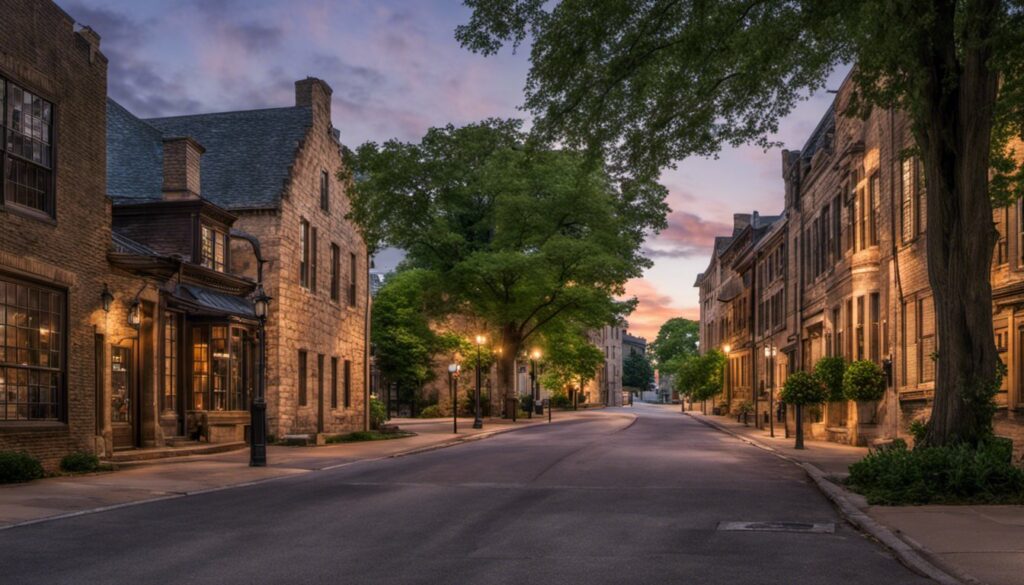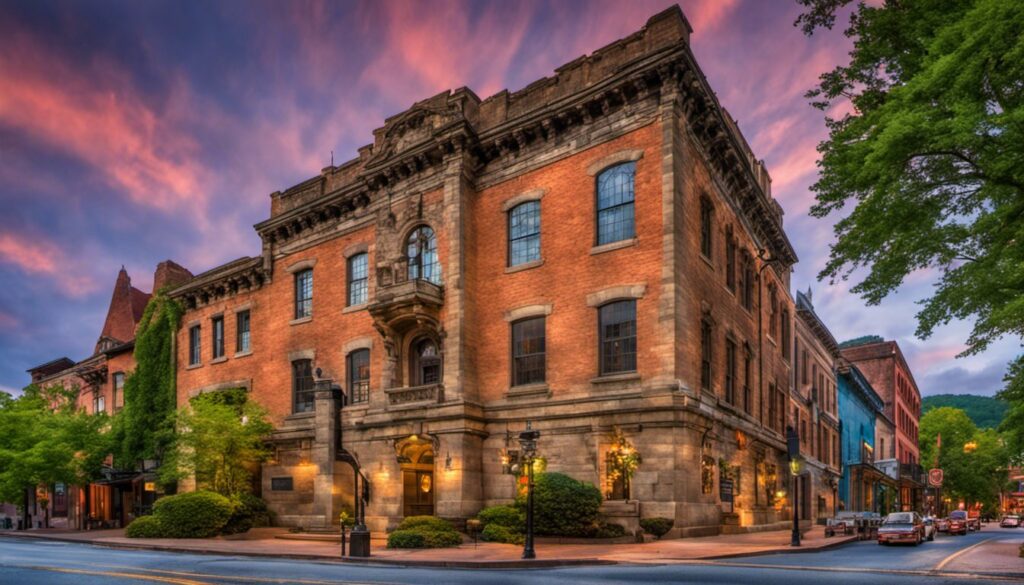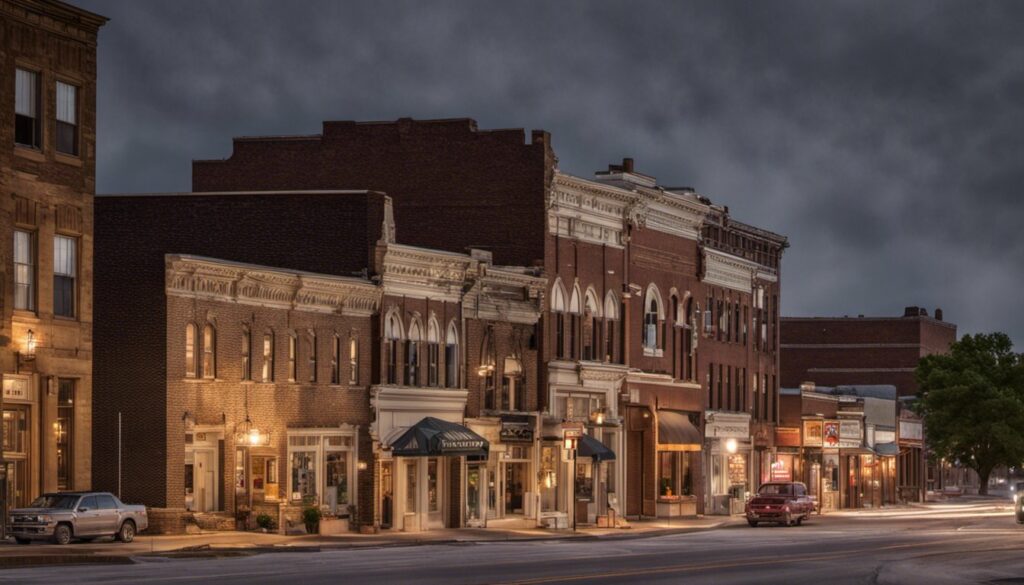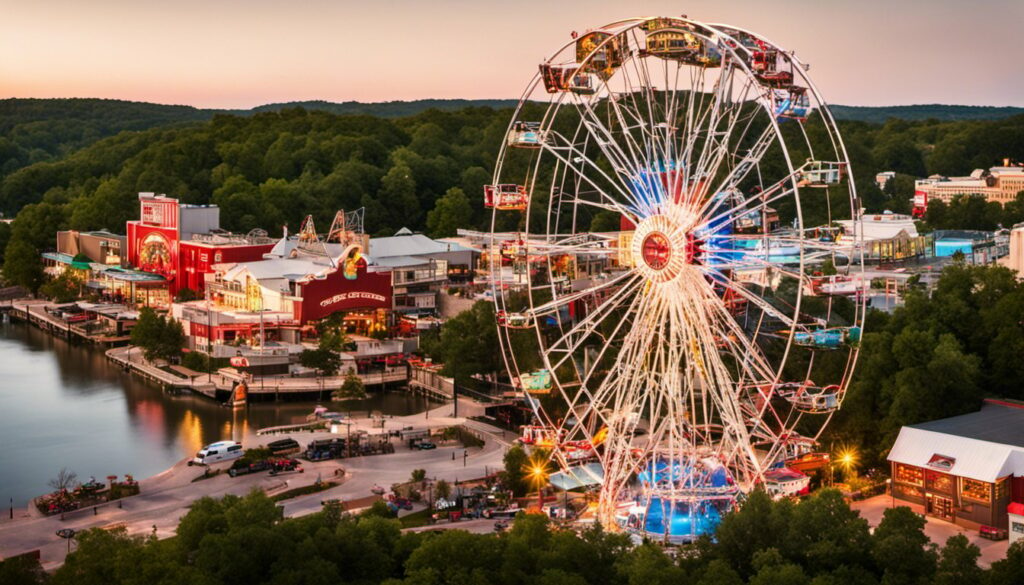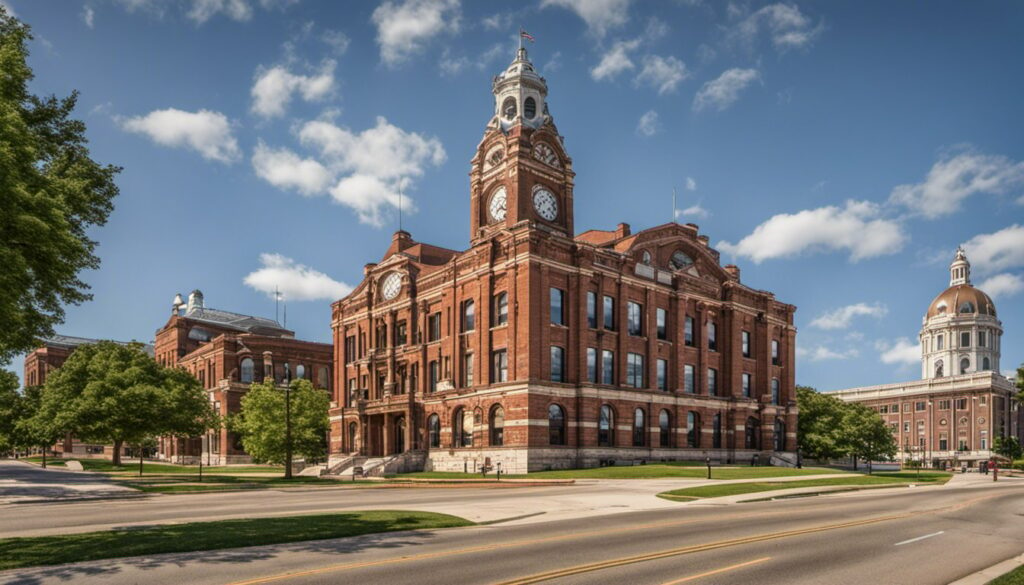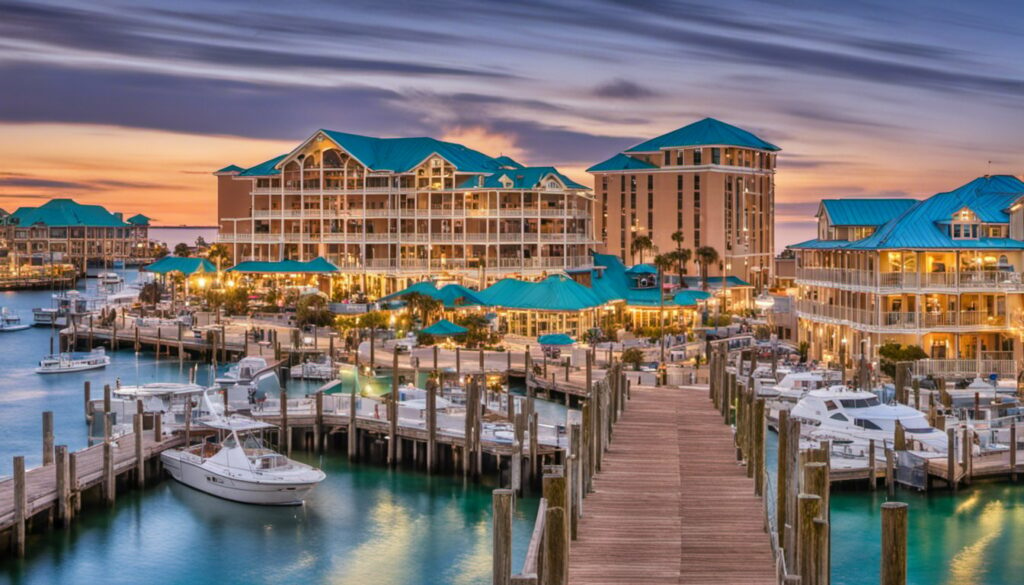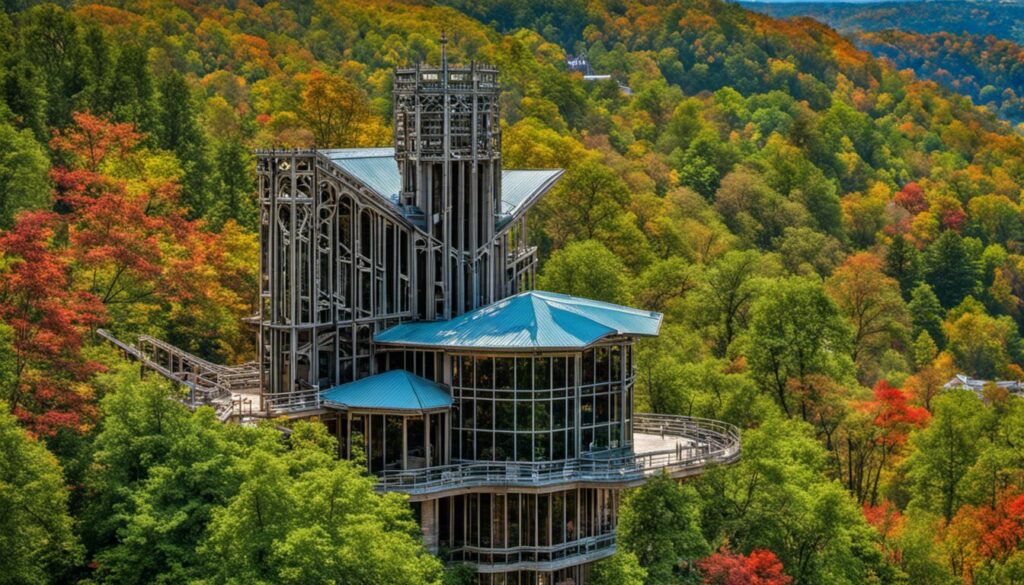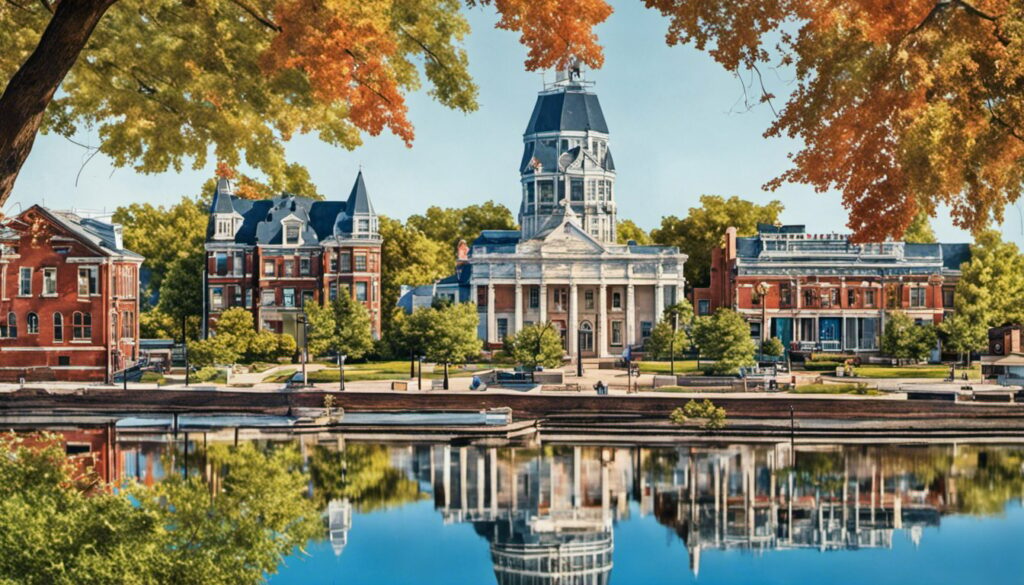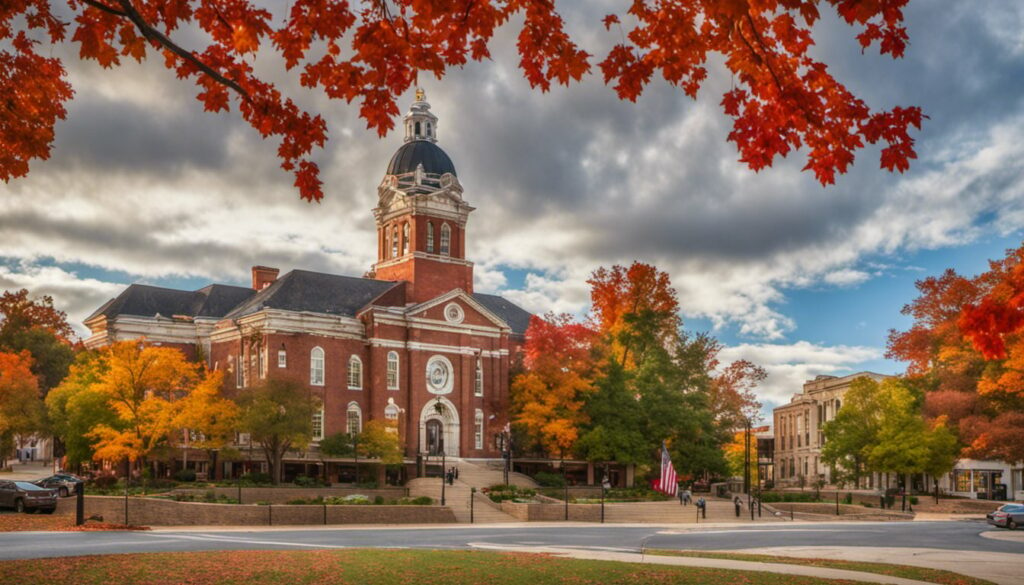

Table Of Content
- Exploring Stamford
- Historical Sites in Stamford
- Famous Landmarks in Stamford
- Architectural Marvels in Stamford
- Stamford’s Maritime History
- Stamford During the Revolutionary War
- Historical Sites Beyond Stamford
- Preserving Stamford’s History
- Stamford in Maps and References
- Historical Sites in Nearby Locations
- Frequently Asked Questions
Exploring Stamford
Are you ready to explore Stamford, Connecticut’s historical sites and famous landmarks? Stamford is a city located in Fairfield County, and it is surrounded by charming suburbs such as New Canaan and Greenwich. Let’s dive into Stamford’s location, setting, and suburban areas to get a better understanding of what this city has to offer.
Stamford’s Location

Stamford is located in southern Connecticut, just a short drive away from New York City. Its location makes it a popular destination for visitors who want to experience the best of both worlds. You can enjoy the hustle and bustle of the city during the day and return to the peaceful suburbs of Stamford at night.
Stamford’s Setting

Stamford’s setting is one of its most defining features. The city is situated on the Long Island Sound, which means you can enjoy stunning waterfront views from many of its historical sites and famous landmarks. Some of the most popular waterfront destinations in Stamford include Cove Island Park, Cummings Park, and West Beach.
Stamford’s Suburb

Stamford’s suburban areas are just as charming as its city center. New Canaan and Greenwich are two of the most popular suburbs located near Stamford. New Canaan is known for its picturesque downtown area, which features unique boutiques and restaurants. Greenwich, on the other hand, is home to some of the most beautiful parks and gardens in the state.
Overall, Stamford is a city that has something to offer for everyone. Whether you want to explore its historical sites and famous landmarks or enjoy the peace and quiet of its suburban areas, Stamford is the perfect destination for you.
Historical Sites in Stamford


Stamford, Connecticut is a city full of rich history and culture. There are several historical sites in Stamford that you can visit to learn more about the city’s past. Here are some of the most notable historical sites in Stamford:
Deacon John Davenport House

The Deacon John Davenport House is a historic home located on 2777 Bedford Street in Stamford. It was built in the mid-18th century and is a great example of colonial architecture. The house is named after Deacon John Davenport, who was a prominent figure in the early history of Stamford.
Downtown Stamford Historic District

The Downtown Stamford Historic District is a historic district located in the heart of Stamford. It includes several historic buildings and landmarks, such as the Palace Theatre, the First Presbyterian Church of Stamford, and the Stamford Historical Society. The district is a great place to explore and learn more about the city’s history.
Fort Stamford Site

The Fort Stamford Site is a public park located on 900 Westover Road in the Westover neighborhood of Stamford. It was the site of a military earthworks erected during the American Revolutionary War. The site is listed on the National Register of Historic Places and is a great place to visit for history buffs.
Benjamin Hait House

The Benjamin Hait House is a historic home located on 44 Strawberry Hill Avenue in Stamford. It was built in the mid-18th century and is a great example of colonial architecture. The house is named after Benjamin Hait, who was a prominent figure in the early history of Stamford.
Hoyt-Barnum House

The Hoyt-Barnum House is a historic home located on 713 Bedford Street in Stamford. It was built in the mid-18th century and is a great example of colonial architecture. The house is named after its former owners, Samuel Hoyt and Phineas Taylor Barnum.
John Knap House

The John Knap House is a historic home located on 301 Strawberry Hill Avenue in Stamford. It was built in the mid-18th century and is a great example of colonial architecture. The house is named after John Knap, who was a prominent figure in the early history of Stamford.
Long Ridge Village Historic District

The Long Ridge Village Historic District is a historic district located in the Long Ridge Village area of Stamford. It includes several historic buildings and landmarks, such as the Long Ridge Congregational Church and the Long Ridge Cemetery. The district is a great place to explore and learn more about the city’s history.
Marion Castle

Marion Castle is a historic home located on 1 Rogers Road in Stamford. It was built in the early 20th century and is a great example of Tudor Revival architecture. The house is named after its former owner, Frank Marion.
Terre Bonne

Terre Bonne is a historic home located on 36 Woodland Avenue in Stamford. It was built in the early 20th century and is a great example of Colonial Revival architecture. The house is named after its former owner, John J. Sullivan.
These historical sites are just a few of the many landmarks and attractions that make Stamford such a fascinating city to explore. Whether you’re a history buff or just looking for a fun day out, there’s something for everyone in Stamford.
Famous Landmarks in Stamford


Stamford, Connecticut is home to several famous landmarks that attract visitors from all over the world. From historic churches to beautiful bridges, there’s something for everyone to see and appreciate in this city. In this section, we’ll explore some of the most popular landmarks in Stamford.
First Presbyterian Church

The First Presbyterian Church is a historic landmark located in the heart of Stamford. Built in 1868, this beautiful church is known for its stunning architecture and intricate stained glass windows. The church is also famous for its impressive pipe organ, which was built in 1929 and is still in use today. If you’re interested in history or architecture, a visit to the First Presbyterian Church is a must.
Main Street Bridge

The Main Street Bridge is another famous landmark in Stamford. This bridge spans the Rippowam River and was built in 1921. It’s known for its unique design, which features four stone arches and decorative iron railings. The Main Street Bridge is not only a beautiful landmark, but it’s also an important part of Stamford’s transportation infrastructure.
Cove Island Houses

The Cove Island Houses are a group of historic homes located on Cove Island in Stamford. These homes were built in the late 1800s and early 1900s and are known for their unique architecture and stunning views of the Long Island Sound. The Cove Island Houses are a great place to visit if you’re interested in historic homes or just want to enjoy a peaceful stroll along the waterfront.
Linden Apartments

The Linden Apartments are a group of historic apartments located in downtown Stamford. Built in 1929, these apartments are known for their Art Deco architecture and unique design. The Linden Apartments are a great example of the high artistic values that were prevalent in the early 20th century. If you’re interested in architecture or design, a visit to the Linden Apartments is a must.
Stamford’s famous landmarks are not only beautiful, but they’re also an important part of the city’s history and culture. Whether you’re interested in history, architecture, or just want to enjoy some beautiful views, there’s something for everyone to see and appreciate in Stamford.
Architectural Marvels in Stamford


Stamford is home to several architectural marvels that showcase the city’s rich history and culture. From churches to government buildings, these structures are not only aesthetically pleasing but also tell a story of the city’s past. Here are two notable examples of architectural marvels in Stamford:
St. Andrew’s Protestant Episcopal Church

St. Andrew’s Protestant Episcopal Church is a stunning example of Gothic Revival architecture. The church was built in 1869 and features a striking design with a steeply pitched roof, pointed arches, and intricate stonework. The church’s interior is just as impressive, with beautiful stained glass windows and ornate woodwork.
The church’s design is a nod to the medieval period and is a testament to the skill of the architects and builders who constructed it. The use of Gothic Revival architecture in the church’s design is also a reflection of the 19th-century trend of reviving historical styles in architecture.
Church of the Holy Name

The Church of the Holy Name is another architectural marvel in Stamford. The church was built in 1890 and features a beautiful Romanesque Revival design. The church’s exterior is made of brownstone and features intricate carvings and a stunning rose window. The interior of the church is just as impressive, with beautiful stained glass windows and a vaulted ceiling.
The use of brownstone in the church’s construction is a nod to the material’s popularity in the late 19th century. Brownstone was a common building material in the Northeast during this time, and many buildings in Stamford feature this distinctive stone.
Overall, these two churches are excellent examples of the impressive architecture that can be found in Stamford. The use of historical styles, high-quality materials, and skilled construction methods all contribute to the beauty and longevity of these structures. Whether you’re interested in design, architecture, materials, method of construction, or American history, these architectural marvels are sure to impress.
Stamford’s Maritime History


If you’re a history buff, you’ll love exploring Stamford’s rich maritime history. Stamford Harbor has been a bustling port since the 1640s, and it’s still an active commercial harbor today. The harbor has played a vital role in the city’s development, and there are plenty of landmarks and museums that showcase its maritime history.
The Palace Theater

One of the most famous landmarks in Stamford is the Palace Theater. Built in 1927, the theater was originally a vaudeville house and movie theater. Over the years, it has hosted a variety of events, including plays, concerts, and comedy shows.
The Palace Theater is a beautiful example of the Art Deco style of architecture. The theater’s interior is decorated with intricate plasterwork and colorful murals. The stage is flanked by two large columns that support a proscenium arch, which is adorned with a stunning mural of the night sky.
If you’re interested in the history of the Palace Theater, you can take a guided tour of the building. The tour will take you backstage and give you a behind-the-scenes look at the theater’s operations. You’ll also learn about the theater’s rich history and the famous performers who have graced its stage over the years.
Other Maritime Landmarks and Museums


Stamford has plenty of other landmarks and museums that showcase its maritime history. The city is home to a historic mill that was once used to grind corn and wheat. The mill has been restored and is now a popular tourist attraction.
If you’re interested in the history of sailing, you should visit the Charles W. Morgan, a historic whaling ship that was built in 1841. The ship is now a museum, and you can take a tour to learn about the life of a whaler in the 19th century.
For a more in-depth look at maritime history, you should visit the Mystic Seaport Museum in nearby Mystic, Connecticut. The museum is home to a vast collection of historic ships and artifacts, and it offers a variety of programs and exhibits that showcase the history of sailing in the United States.
Overall, Stamford’s maritime history is a fascinating subject that offers plenty of opportunities for exploration and learning. Whether you’re interested in the harbor, the mill, or the Charles W. Morgan, there’s something for everyone to enjoy in Stamford’s rich maritime history.
Stamford During the Revolutionary War


During the Revolutionary War, Stamford played a crucial role in the defense of Connecticut from loyalist raids. As a result, the city boasts several historical sites that are a must-visit for history buffs.
Fort Stamford

One of the most significant landmarks of the Revolutionary War in Stamford is Fort Stamford. The fort was designed by the engineer who constructed West Point, Rufus Putnam, and General David Waterbury oversaw its construction in 1781. The fort was created to aid in the defense of Connecticut from loyalist raids.
Fort Stamford was a vital stronghold during the Revolutionary War and played a crucial role in the defense of Connecticut. The fort was strategically located on a hilltop that offered a clear view of the surrounding areas, making it an ideal location for defense against enemy attacks. Today, the fort is a popular historical site that attracts visitors from all over the world.
Visitors to Fort Stamford can explore the fort’s history and learn about the brave soldiers who fought to defend their land during the Revolutionary War. The fort offers an exciting glimpse into the past and is an excellent opportunity for history enthusiasts to learn more about the American Revolutionary War.
In conclusion, Stamford’s role in the Revolutionary War is an essential part of American history, and the city boasts several historical sites that are a must-visit for history buffs. Fort Stamford is one of the most significant landmarks of the Revolutionary War in Stamford and offers an exciting glimpse into the past.
Historical Sites Beyond Stamford


If you want to explore more historical sites and landmarks beyond Stamford, Connecticut has plenty to offer. From the state capital of Hartford to the charming town of Wethersfield, there are many fascinating places to visit.
One must-visit site is the Mark Twain House in Hartford. This beautiful Victorian mansion was the home of the famous American author from 1874 to 1891. Today, it is a museum where you can learn about Twain’s life and works, as well as the history of the house itself.
Another interesting site is the Farmington Canal, which runs from New Haven to Northampton, Massachusetts. The canal played a vital role in Connecticut’s industrial development in the 19th century, and today you can walk or bike along its path and see remnants of the old locks and bridges.
If you’re interested in military history, a visit to Fort Griswold in Bridgeport is a must. This fort played a significant role in the Revolutionary War and the War of 1812, and today you can tour the grounds and see the original cannons and fortifications.
For a unique experience, head to Gillette Castle in East Haddam. This medieval-style castle was built by actor William Gillette in the early 20th century and features quirky architectural details and stunning views of the Connecticut River.
Finally, if you’re looking for a peaceful outdoor retreat, Harkness Memorial State Park in Waterford is a beautiful spot to relax and enjoy nature. The park features gardens, a beach, and a mansion that was once the summer home of a wealthy industrialist.
Overall, Connecticut offers a wealth of historical sites and landmarks beyond Stamford. Whether you’re interested in literature, military history, or simply enjoying the great outdoors, there’s something for everyone to explore.
Preserving Stamford’s History


Preserving Stamford’s history is essential to maintain the city’s cultural heritage and identity. The city has a rich history dating back to its settlement in 1641, and it is home to numerous historical sites and landmarks. The National Register of Historic Places lists 35 properties that are entirely or partially located in Stamford, including the Bedford Street Historic District and the Rippowam River Historic District.
To protect and preserve these sites, the city of Stamford has established a set of regulations and guidelines. The Stamford Historic Preservation Advisory Commission (HPAC) is responsible for reviewing and approving applications for alterations or demolition of historic structures. If you own a historic property in Stamford and want to make alterations, you need to apply for a Certificate of Appropriateness from HPAC.
To apply for a Certificate of Appropriateness, you need to provide detailed plans of the proposed alterations, including materials, colors, and dimensions. The HPAC will review your application and determine whether the proposed alterations are appropriate for the historic property. If your application is approved, you can proceed with the alterations. If it is denied, you will need to revise your plans and resubmit your application.
The State Historic Preservation Office (SHPO) also plays a crucial role in preserving Stamford’s history. The SHPO provides technical assistance and guidance to property owners, developers, and municipalities on historic preservation issues. The SHPO also administers the Connecticut Historic Preservation Tax Credit Program, which provides tax credits to property owners who rehabilitate historic properties.
In addition to the efforts of the city and state, several corporations have also played a significant role in preserving Stamford’s history. For example, the Schick Corporation restored and renovated the historic Yale and Towne Manufacturing Company complex, which is now a mixed-use development known as Harbor Point.
Preserving Stamford’s history is not only important for maintaining the city’s cultural heritage and identity, but it also has economic benefits. Historic preservation can attract tourists, create jobs, and increase property values. It is essential to continue to protect and preserve Stamford’s historical sites and landmarks for future generations to enjoy.
Stamford in Maps and References


If you’re planning to visit Stamford, Connecticut, it’s a good idea to familiarize yourself with the area using maps and references. Knowing the location of historical sites and famous landmarks can help you plan your itinerary and make the most of your trip.
Stamford is located in Fairfield County, Connecticut, just 30 miles northeast of New York City. You can easily find Stamford on a map of Connecticut, which is located in the northeastern part of the United States. The city is bordered by Darien to the east, New Canaan to the north, and Greenwich to the west.
There are several districts in Stamford that are worth exploring, including the Downtown Special Services District, the Waterside Design District, and the Stamford Transportation Center Area. Each district has its own unique character and offers a variety of attractions, restaurants, and shops.
If you’re interested in exploring historical sites and famous landmarks in Stamford, you may want to check out the National Register of Historic Places listings in Stamford, Connecticut. This database includes 35 properties that are entirely or partially located in Stamford, including the Hoyt-Barnum House, the Stamford Railroad Station, and the Yale and Towne Manufacturing Company Historic District.
In addition to the National Register of Historic Places, you can also find historical maps of Stamford online. Websites like Old Maps Online offer a collection of old maps that show the development of Stamford over time. You can also find interactive maps of Stamford on the city’s website, which can help you navigate the area and find specific locations.
Finally, if you’re looking for more information about historical sites and famous landmarks in Stamford, you may want to check out local organizations like the Stamford Historical Society. This organization is dedicated to preserving and promoting the history of Stamford and offers a variety of resources for visitors and residents alike.
With the help of maps and references, you can easily explore all that Stamford has to offer. Whether you’re interested in history, architecture, or simply exploring new places, there’s something for everyone in this vibrant Connecticut city.
Historical Sites in Nearby Locations
If you’re interested in exploring more historical sites in the vicinity of Stamford, there are plenty of options to choose from. Here are some notable locations you might want to check out:
New Canaan

New Canaan is a town located in Fairfield County, just a short drive from Stamford. The town is home to several historic sites, including the New Canaan Historical Society, which features exhibits and artifacts related to the town’s history. You can also visit the Silvermine Guild Arts Center, which was once a hub for artists and writers in the early 20th century.
Greenwich, Connecticut

Greenwich is another nearby town with a rich history. One of the most notable landmarks is the Bush-Holley House, which was once home to a colony of artists and writers in the late 19th century. The house is now a museum that offers tours and exhibits related to the town’s history. You can also visit the Greenwich Historical Society, which features exhibits and events related to the town’s past.
Bushnell Park

If you’re willing to venture a bit further, you might want to check out Bushnell Park in Hartford. The park is home to several historic sites, including the Soldiers and Sailors Memorial Arch, which was built in 1886 to honor the soldiers who fought in the Civil War. You can also visit the Bushnell Park Carousel, which was built in 1914 and is one of only three surviving wooden carousels in the state.
Other Municipalities and Boroughs


There are plenty of other municipalities and boroughs in the area that offer opportunities to explore local history. Some notable locations include Norwalk, which is home to the Lockwood-Mathews Mansion Museum, and Bridgeport, which features the Barnum Museum. You might also want to check out the historic district in Southport, which is home to several well-preserved 19th-century homes and buildings.
With so many historical sites to explore in the surrounding area, you’re sure to find something that piques your interest. Whether you’re a history buff or simply looking for a fun way to spend a day, these nearby locations offer plenty of opportunities to learn about the past and experience the rich cultural heritage of Connecticut.
Frequently Asked Questions
What are some must-see historical sites in Stamford, Connecticut?
If you’re interested in history, Stamford has plenty of must-see historical sites. One of the most popular is the Hoyt-Barnum House, which was built in 1699 and is the oldest house in Stamford. Another must-see is the Stamford Historical Society Museum, which features exhibits and artifacts that showcase Stamford’s rich history.
What famous landmarks can be found in Stamford, Connecticut?
Stamford is home to several famous landmarks, including the Stamford Town Center, which is a popular shopping destination. The Stamford Museum & Nature Center is another landmark that is worth visiting, as it features a planetarium, a working farm, and a nature trail.
Are there any unique or lesser-known historical sites in Stamford, Connecticut?
Yes, there are several unique and lesser-known historical sites in Stamford. One such site is the E. Gaynor Brennan Golf Course, which was once the site of a Revolutionary War battle. Another lesser-known site is the Stamford Old Town Hall, which was built in 1906 and now serves as a cultural center.
What is the history behind some of the famous landmarks in Stamford, Connecticut?
The Stamford Town Center was built in 1982 and has since become a popular shopping destination for both locals and tourists. The Stamford Museum & Nature Center was founded in 1930 and has since become a popular destination for families.
What are some interesting facts about the historical sites and landmarks in Stamford, Connecticut?
Did you know that the Hoyt-Barnum House was once used as a hospital during the Revolutionary War? Or that the Stamford Museum & Nature Center has a working farm that is home to cows, sheep, and other animals? These are just a few of the interesting facts about the historical sites and landmarks in Stamford.
Which historical site or landmark in Stamford, Connecticut is most popular among tourists?
The Stamford Town Center is one of the most popular landmarks among tourists, as it offers a wide variety of shopping and dining options. The Stamford Museum & Nature Center is also a popular destination, especially for families with children.

